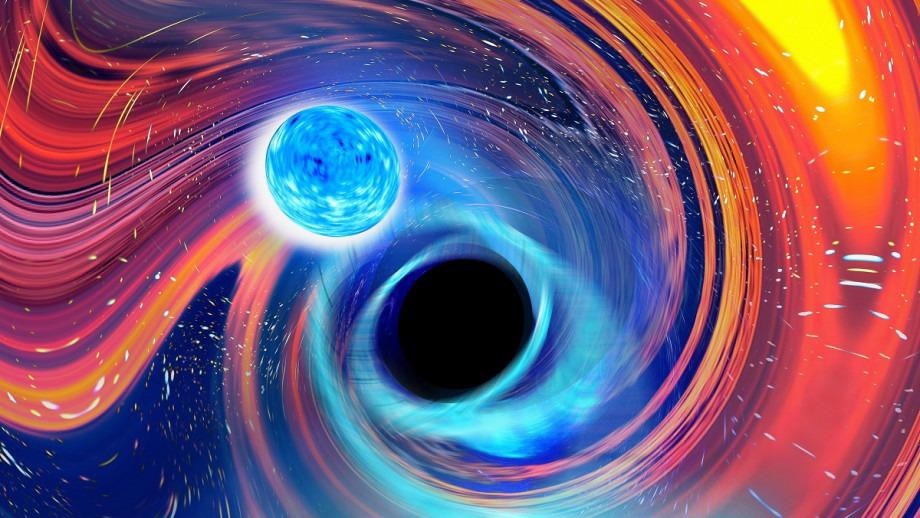Jul 1 2021
For the first-ever time, researchers have detected black holes devouring neutron stars, “like Pac-Man”, in a breakthrough recording the collision of the two most extreme and elusive objects in the Universe.
 Artist’s impression of a neutron star and black home merging. Image Credit: Carl Knox, OzGrav/Swinburne University.
Artist’s impression of a neutron star and black home merging. Image Credit: Carl Knox, OzGrav/Swinburne University.
The collisions took place around one billion years ago.
The Virgo gravitational-wave observatory in Italy and the Laser Interferometer Gravitational-Wave Observatory (LIGO) in the United States have captured the gravitational waves from the death spiral and merger of a neutron star and a black hole, not just once but twice. The study results were reported on July 1st, 2021.
According to the research team, their observations could unravel a few of the most complicated mysteries of the universe, such as the workings of space and time and the building blocks of matter.
The worlds-first detections were a collaborative work of over 1,000 researchers, several of them from Australia, including The Australian National University (ANU), guiding the way.
According to Distinguished Professor Susan Scott, the events took place nearly a billion years ago but were so huge that people are still able to see their gravitational waves.
These collisions have shaken the Universe to its core and we've detected the ripples they have sent hurtling through the cosmos. Each collision isn't just the coming together of two massive and dense objects. It's really like Pac-Man, with a black hole swallowing its companion neutron star whole. These are remarkable events and we have waited a very long time to witness them. So it's incredible to finally capture them.
Susan Scott, Study Co-Author and Distinguished Professor, Centre for Gravitational Astrophysics, Australian National University
One of the events was a black hole with a nine-times larger mass compared to the sun and a neutron star with two times the mass of the sun. The other event involved a black hole with around six times the mass of the sun and a neutron star having 1.5 times its mass.
According to Professor Scott, who is also working as a Chief Investigator at the ARC Centre of Excellence for Gravitational Wave Discovery (OzGrav), the international group had earlier imaged several events that involved the collision of two black holes as well as the smashing together of two neutron stars.
Now, we’ve completed the last piece of the puzzle with the first confirmed observations of gravitational waves from a black hole and a neutron star colliding.
Susan Scott, Study Co-Author and Distinguished Professor, Centre for Gravitational Astrophysics, Australian National University
Dr. Johannes Eichholz, from the ANU Centre for Gravitational Astrophysics and an Associate Investigator with OzGrav, stated that the two detections were actually achieved on January 5th and 15th, 2020.
These kind of detections are incredibly rare. We haven't detected these events once - but twice and within 10 days of each other. Like the ripples from these two events, which have been felt a billion years later, these findings will have a profound impact on our understanding of the Universe for many years to come.
Dr. Johannes Eichholz, Centre for Gravitational Astrophysics, Australian National University
Journal Reference:
Abbott, R., et al. (2021) Observation of Gravitational Waves from Two Neutron Star–Black Hole Coalescences. The Astrophysical Journal Letters. doi.org/10.3847/2041-8213/ac082e